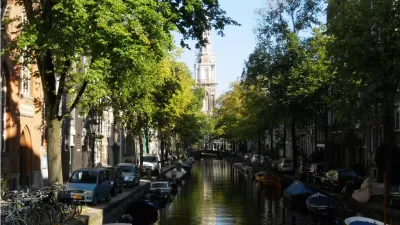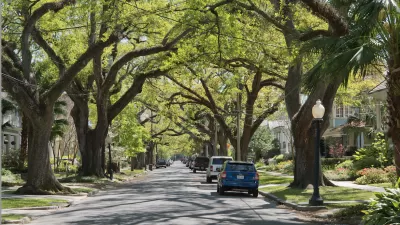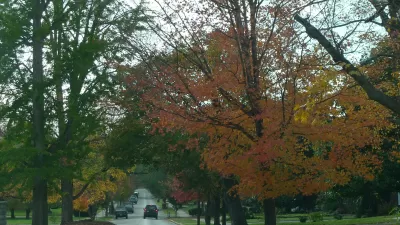As summer temperatures rise and heat waves roll through, cities can take steps to keep cool. But shedding the heat may be difficult for urban areas designed to retain it.

Most cities weren't designed with a warming climate in mind. If anything, the aim has been to keep residents warm. Madeline Ostrander writes about how the coming years will force this paradigm to shift. From the piece: "[Georgia Tech professor Brian] Stone had analyzed five decades of temperature data from fifty cities around the United States. He found that the majority were getting hotter than the rural areas around them, and the change was most profound in Louisville—an increase of about 1.7 degrees every decade since 1960."
A big part of the problem, unsurprisingly, comes down to all those heat-absorbing black asphalt roads. "The city had quietly become the country's worst example of what meteorologists call the urban heat-island effect, in which dark, paved surfaces absorb solar radiation, raising the temperature of the air around them."
Researchers found that Louisville was losing a full fifty-four thousand trees a year, both a result of changing climate and an exacerbating factor for heat. "How many lives could be spared, the researchers then asked, if the city planted more trees and grass, replaced dark asphalt and concrete with light-colored and reflective roofs and pavement, and cut back on the excess heat seeping out of buildings and the tailpipes of cars and buses?"
Whether cities can take the heat has major implications for public health. "The European heat wave of 2003, for instance, took at least thirty-five thousand lives, a disaster intensified both by global warming and, according to Stone, the heat-trapping design of cities. [A recent study] estimated that if global temperatures rise unabated and the city's population continues to grow, New York could lose more than three thousand lives every year from heat by 2080 (compared with about six hundred in 2006)."
FULL STORY: As Our Cities Grow Hotter, How Will We Adapt?

Trump Administration Could Effectively End Housing Voucher Program
Federal officials are eyeing major cuts to the Section 8 program that helps millions of low-income households pay rent.

Planetizen Federal Action Tracker
A weekly monitor of how Trump’s orders and actions are impacting planners and planning in America.

Ken Jennings Launches Transit Web Series
The Jeopardy champ wants you to ride public transit.

Rebuilding Smarter: How LA County Is Guiding Fire-Ravaged Communities Toward Resilience
Los Angeles County is leading a coordinated effort to help fire-impacted communities rebuild with resilience by providing recovery resources, promoting fire-wise design, and aligning reconstruction with broader sustainability and climate goals.

When Borders Blur: Regional Collaboration in Action
As regional challenges outgrow city boundaries, “When Borders Blur” explores how cross-jurisdictional collaboration can drive smarter, more resilient urban planning, sharing real-world lessons from thriving partnerships across North America.

Philadelphia Is Expanding its Network of Roundabouts
Roundabouts are widely shown to decrease traffic speed, reduce congestion, and improve efficiency.
Urban Design for Planners 1: Software Tools
This six-course series explores essential urban design concepts using open source software and equips planners with the tools they need to participate fully in the urban design process.
Planning for Universal Design
Learn the tools for implementing Universal Design in planning regulations.
Ada County Highway District
Clanton & Associates, Inc.
Jessamine County Fiscal Court
Institute for Housing and Urban Development Studies (IHS)
City of Grandview
Harvard GSD Executive Education
Toledo-Lucas County Plan Commissions
Salt Lake City
NYU Wagner Graduate School of Public Service





























